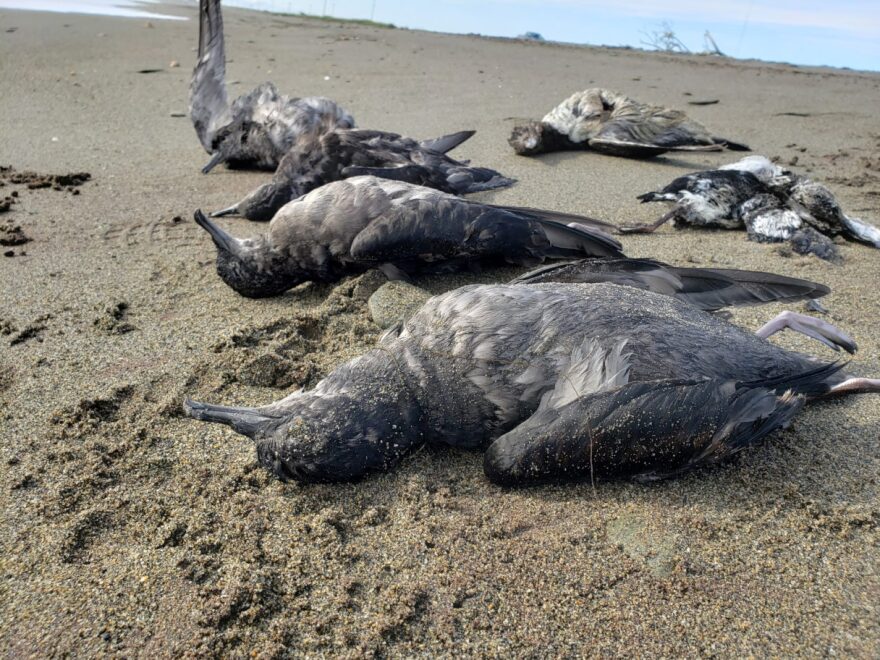Biologists in Alaska have again seen massive seabird die-offs this summer, or “wrecks,” as some experts call them, extending from May into last month.
According to the National Park Service, reports received by mid-August documented thousands of dead short-tailed shearwaters from Bristol Bay, and lower numbers of other types of birds, found deceased in the Northern Bering and Chukchi Seas. This marks the fifth year in a row Alaska has seen mass seabird mortality events.
“Of all the carcasses we’ve collected and sent in, and that people have examined or looked at in any way, it’s starvation. The birds are dying of starvation,” said Kathy Kuletz seabird section lead for Alaska with the U.S. Fish & Wildlife Service.
Kuletz said scientists still can’t determine why hundreds and hundreds of birds, of a variety of species, are washing up on Alaska’s shores, starving to death. According to Kuletz, it’s possible that toxins from harmful algal blooms weakened the birds, preventing them from foraging, cannot be ruled out.
Besides unusually large amounts of dead birds, Fish & Wildlife has also received reports of lethargic seabirds staying in nearshore areas, places where Kuletz said they wouldn’t usually be found.
“Like up inside bays and harbors. And this has even been happening in the Gulf of Alaska near Kodiak. There’s been some shearwaters washing up in there, and in Bristol Bay, they were moving into those waters. During the salmon gillnet fishing season, they were getting caught in gillnets when they don’t normally occur in that region,”
Delbert Pungowiyi of Savoonga has noticed similar patterns from his home on St. Lawrence Island. He said before this season’s die-off began, the cliffs on the east side of the island used to be a seabird spectacle.
“Just from our village, we could hear all those wings beating, going around and around. It just blackened the sky. The auklets, the lesser auklets, the murre birds… It’s so amazing that when you go to the cliffs yourself, they are flying right by you. It’s amazing how you would think that they collide together, but they don’t,” he said.
Pungowiyi gets emotional as he describes what he has seen at the same location this summer.
“To see our cliffs empty, no more spectacle. I think the best way I could put it, because I walked to the cliffs, and my heart just sank: (it’s) ghostly eerie to not see this like it used to be,” he said.
He suspects some species of birds, like the lesser auklets, moved further north to find new feeding grounds instead of staying on St. Lawrence Island this summer. Pungowiyi said he has also observed some birds abandoning their chicks in order to survive, leaving the nest to have a chance to produce more offspring next year.
According to Kuletz, they are still waiting for official toxicology reports to be finished. But so far, they have been able to rule out some widespread bird diseases like avian cholera as not being the cause for these massive seabird die-offs.
Currently, a research team with the U.S. Geological Survey is conducting tests on some seabird carcasses to determine the relationship between toxins and these dead birds.





